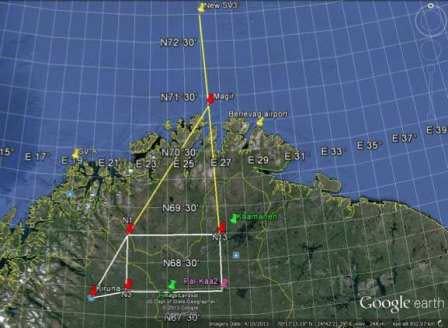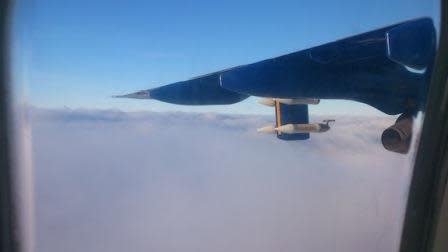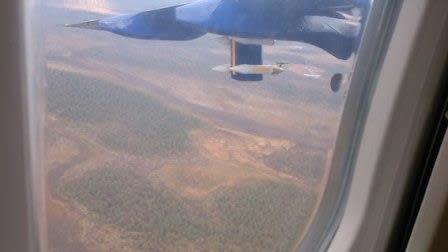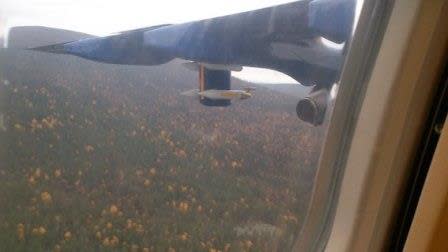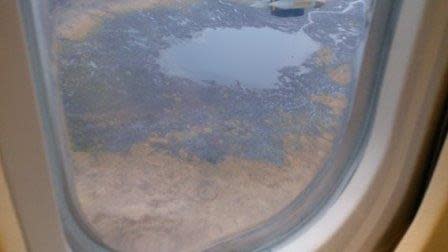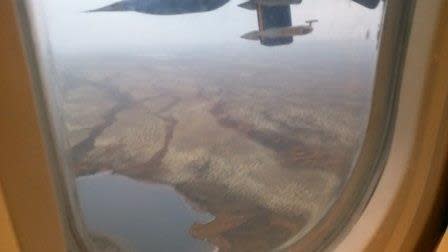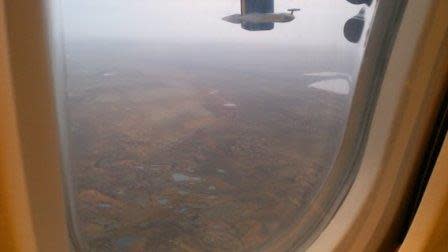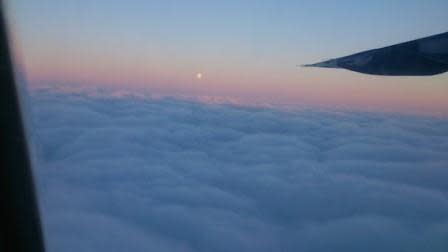Arctic Methane: And so it begins (again)
Thursday 19th September 2013, morning.
Here we are again, in the Arctic for the final MAMM field campaign. Well, I’m actually not quite in the Arctic yet, as I’m currently on a train that has just departed from Boden, which is at about 65.5N, just half a degree south of the Arctic Circle.
The plan for this September campaign is to measure methane at this time of year, so see how it differs from the warmer months of July and August. It’s not that cold in the wetlands yet (still in double figures during the day, and nowhere near freezing at night) so we may still see evidence of wetlands emissions.
View from the train, on my way up to Kiruna. A bit rainy, but some of the trees are looking a pretty as the leaves turn yellow and orange as the seasons change.
The ARA is currently in the air, on its transit flight from the UK over to Kiruna. My train was supposed to be getting in to Kiruna around the same time as the aircraft, so I could have been there for the debrief and brief for this afternoon’s flight. Alas, the UK railways are not the only ones that have delays! A broken down train blocking the rails meant that my sleeper train departed 1h45 late. We managed to makeup some time, and the connecting train from Boden to Kiruna waited for the delayed sleeper, but I will still be too late for the briefing unless they too are delayed. I wasn’t going to fly this afternoon, so it’s not too much of a problem; I’ll just have to catch up with what’s going on when I do arrive.
And I must say, I’m quite glad (and my colleagues certainly will be glad) that I can check in to the hotel and have a quick shower before going to the airport, as I’ve been on the road for over 24 hours now…
Photo diary of first science flight
Thursday 19th September 2013, afternoon.
I am sure everyone who read my first post will be desperate know how my day turned out…! Well, somehow, my train arrived in Kiruna on time, despite setting off 1h45 late. And in a lucky twist, the ARA had taken off late and so landed late at 3pm local time. So James and Nicola picked me up from the station, and I got to the hangar at the same time as the aircraft. In another twist of fate, Seb who was on the afternoon’s crew list was not actually going to fly. So there was a space for me to fly! That shower and change of clothes would just have to wait…
Being the first science flight, we we all super-keen and there was an overabundance of mission scientists, meaning that as a lowly additional extra, I didn’t have anywhere to plug in my laptop from the seat that I was in. Alas, my laptop ran out of battery half way through, so I wasn’t able to monitor the measurements in real-time for the second half of the flight. As we were flying at low level for most of the flight, the seatbelt sign was on so I couldn’t even get up to charge my laptop elsewhere. Instead, I took lots of photos of the land that we were flying over, as (a) I was lucky enough to have a window seat and (b) the amount of methane coming out of the ground will depend on the vegetation cover, so it’s a useful record of that. (NB I haven’t got the time data from the flight as I write this, so I can’t link the photo times with their locations right now. If I have time, I’ll do that once I get hold of that information. It’s a bit too hectic in the middle of a campaign to get all the data in the right place – especially as I’m writing this in my hotel room late at night!)
Anyway, here’s the far-from-comprehensive story of the flight in pictures…
Our nominal flight plan, to give you an idea of where we were flying. We started and finished at Kiruna.
1700 (all times are Swedish local time). It's too cloudy to descend to minimum safe altitude. Just waiting for a break in the clouds so we can get down to near the ground.
1709: We managed to find a break in the clouds and fly down near the surface at minimum safe altitude. A mixture of forest and wetland areas.
1723: The seasons are changing near Pallas, Finland. The orangey blobs are deciduous leaves changing colour. Beautiful!
1739: north of Pallas there are quite a lot of lakes.
1812: Much of the land further north was like this. Not sure what this beige coloured stuff is, but I shall ask around to find out!
1812: taken right after the previous photo, this darker wetland area was also widespread. I wonder if more methanogens are present in one land type or another?
1834: After sampling the wetlands, we have ascended to above the cloud layer. Time to head home!
Previously in this series:
Arctic Methane: Hello and welcome to the MAMM blog
Arctic methane: What’s the story?
Methane and Mosquitoes – Blogging Bogs
Arctic Methane: And in the blue corner…
Arctic Methane: Transiting to Kiruna
Arctic Methane: First science flight
Arctic Methane: A night in Stordalen wetland, Abisko
Arctic Methane: Flight Friday 16th AM
Arctic Methane: Flight Friday 16th PM
Arctic Methane: Flight Saturday 17th AM
Arctic Methane: Flight Saturday 17th PM
Arctic Methane: Flight Sunday 18th AM
Arctic Methane: Flight Sunday 18th PM
Arctic Methane: Flight Monday 19th AM/PM: Going home…
Arctic Methane: MAMM Lapland air sampling road trip
Follow Scientific American on Twitter @SciAm and @SciamBlogs. Visit ScientificAmerican.com for the latest in science, health and technology news.
© 2013 ScientificAmerican.com. All rights reserved.


